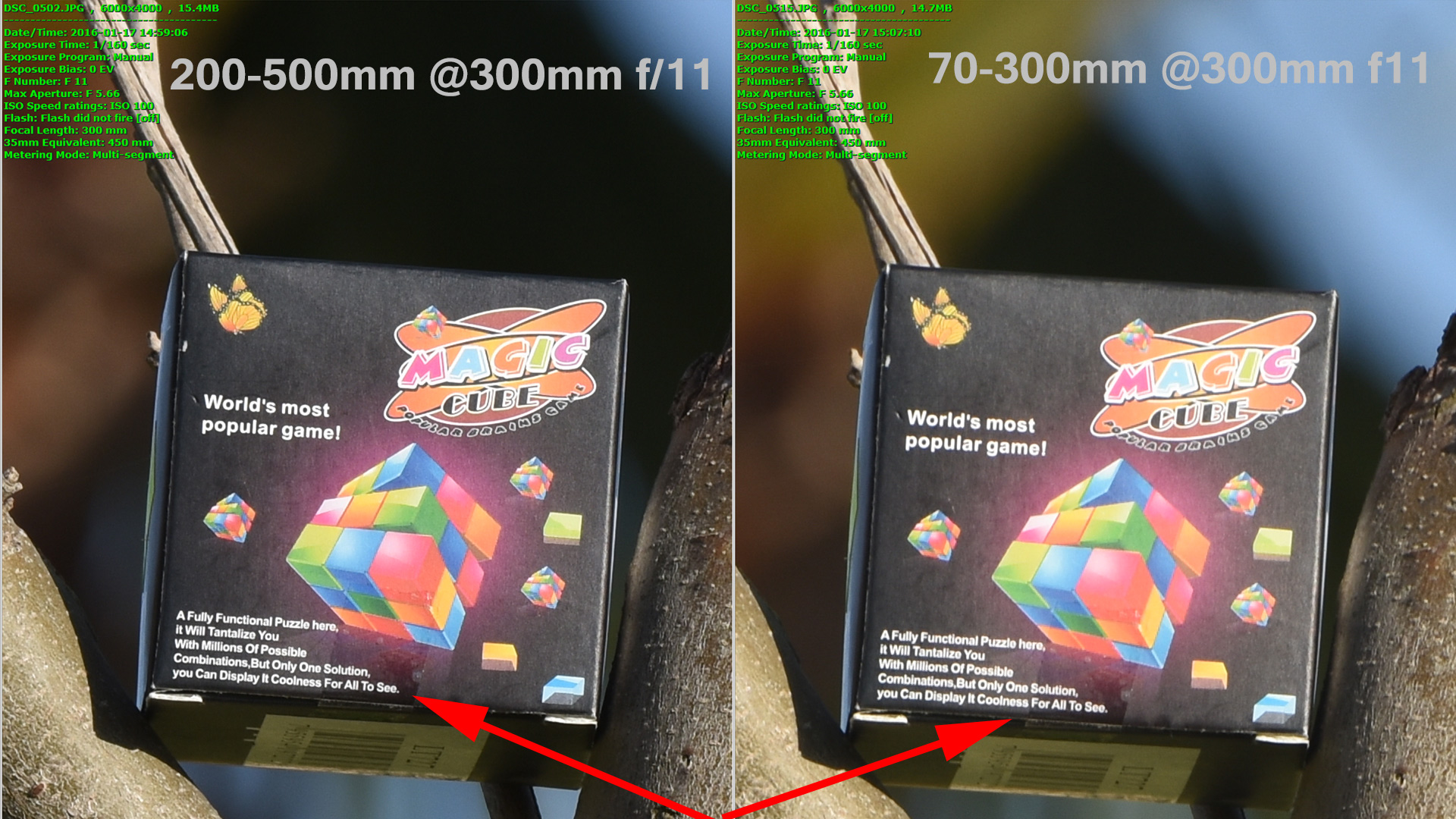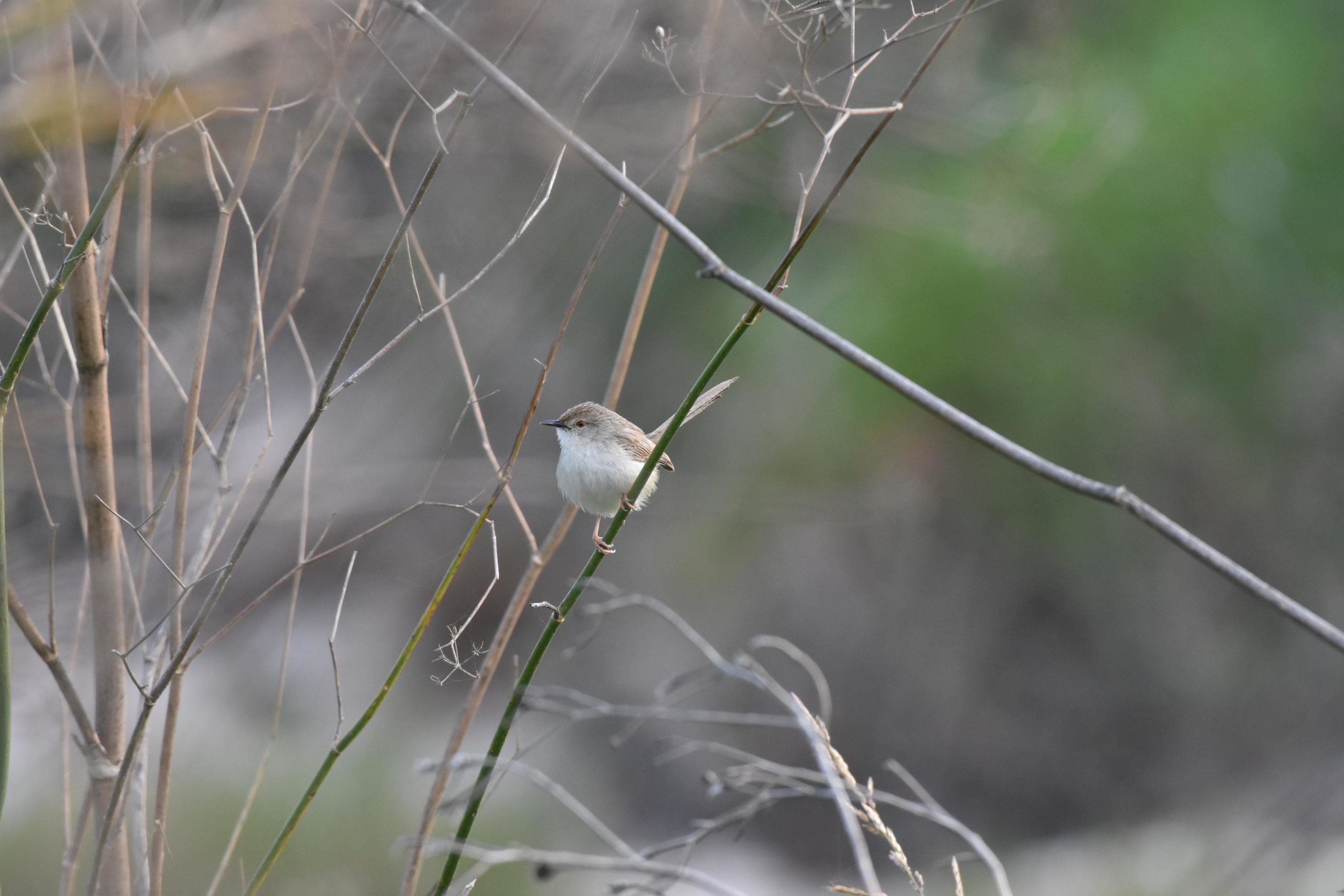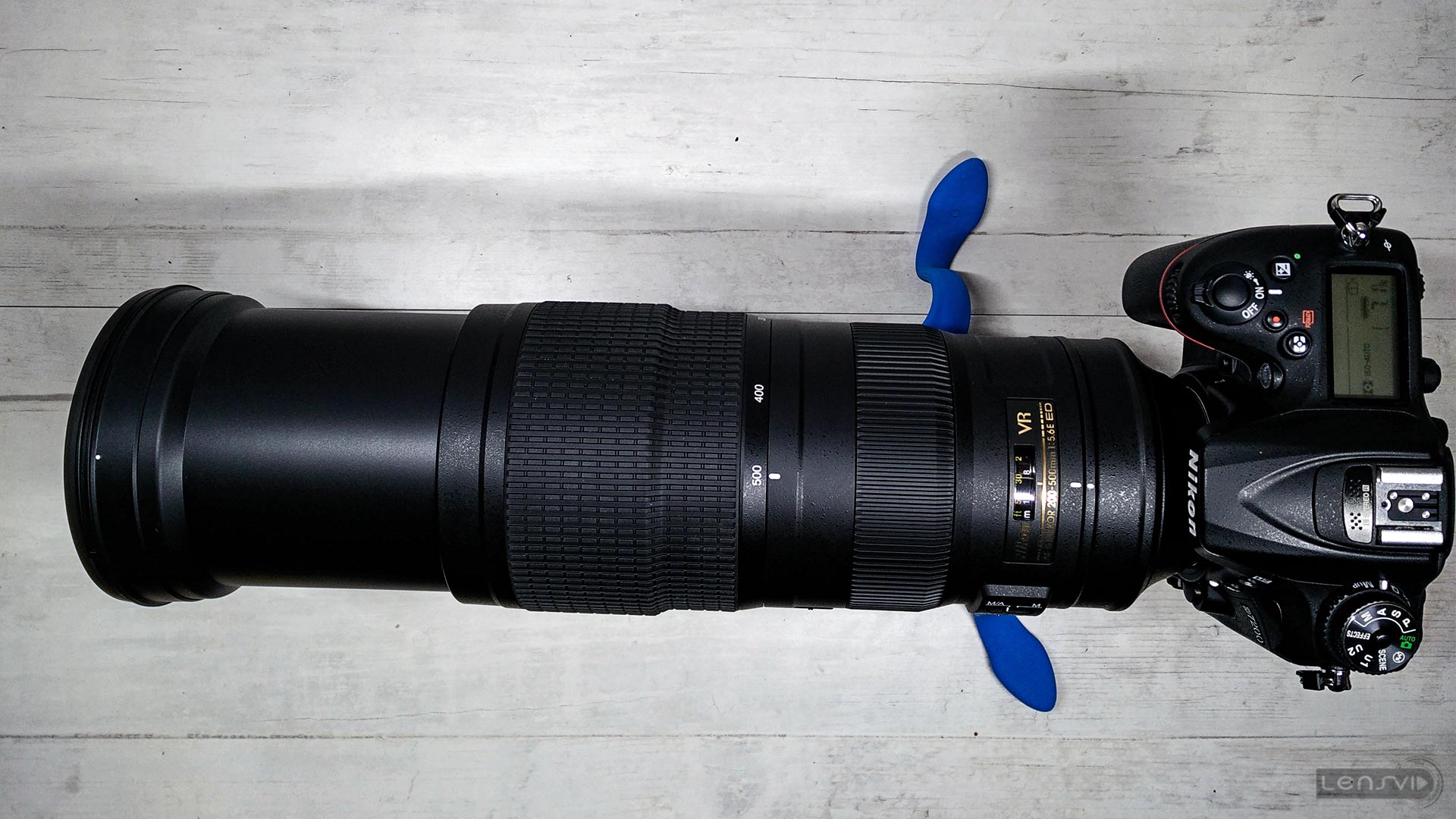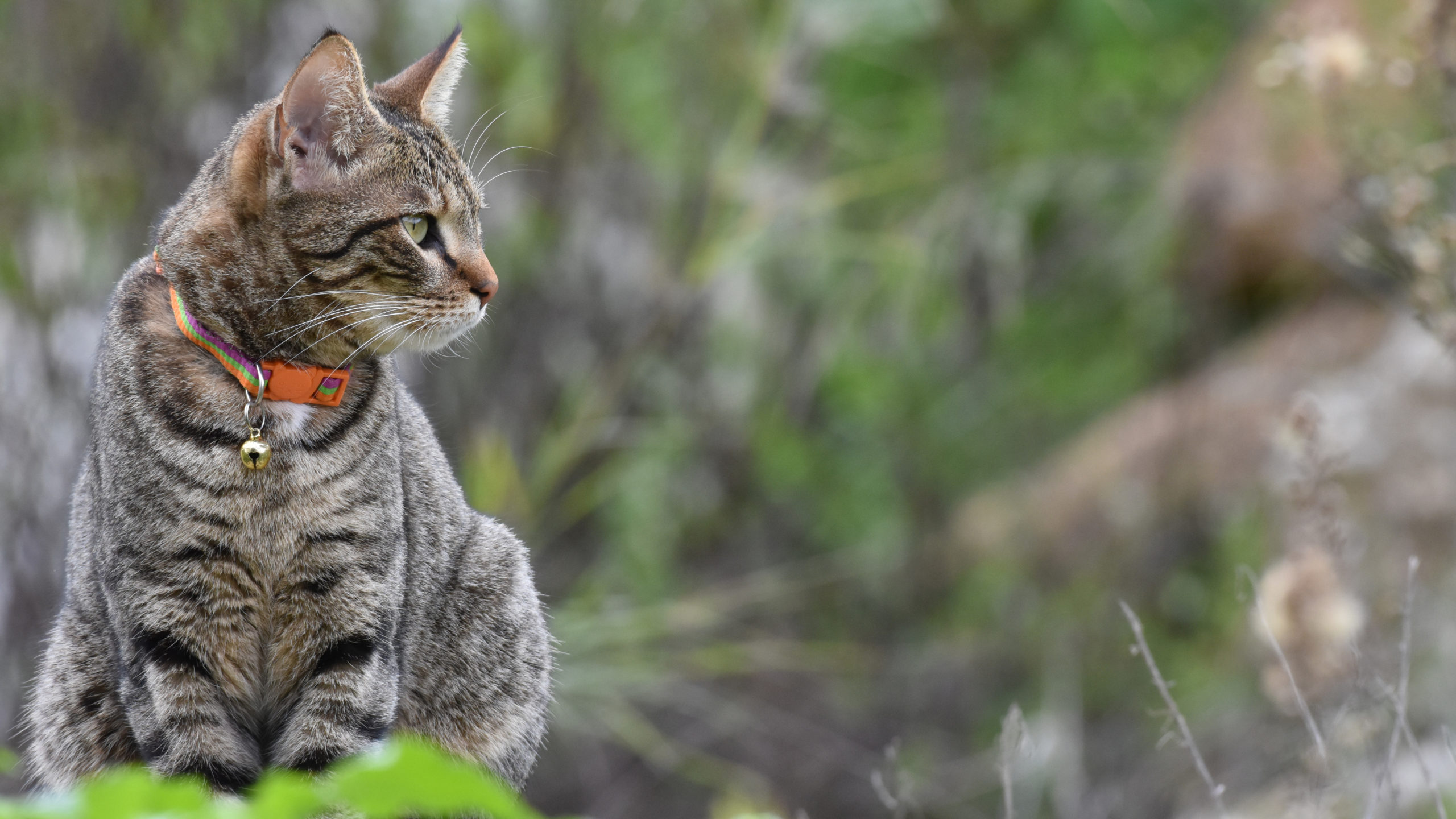Earlier this year, we had a chance to review the new Nikon 200-500mm. This is the forth long telephoto zoom lens that we have been testing here over the past 2 years which certainly gave us some perspective on how the new Nikon performs.
We really enjoy testing long telephoto lenses. As avid bird shooters, each lens that we test is another chance to test our skills and visit nature. We tested the 200-500mm during the winter and although we had quite a few sunny days – this lens – like the rest of the lens in its group is best used when there is enough light to go around (remember – you will want to keep the shutter speed as fast as you can when shooting birds).
The 200-500mm f/5.6E ED VR
 Lets start with a quick look at the basic specs of the Nikon AF-S NIKKOR 200-500mm f/5.6E ED VR:
Lets start with a quick look at the basic specs of the Nikon AF-S NIKKOR 200-500mm f/5.6E ED VR:
- Optical structure – 19 elements in 12 groups.
- ED elements – 3 ED elements.
- VR (image stabilizer) – 4.5 stops.
- Focus system – MF/AF (Full-time manual focus).
- Lens coating –Super Integrated Coating.
- Minimal focusing distance – 2.2m.
- Macro magnification – 1:4.5.
- Length – 267.5 (10.5 inches).
- Weight – 2300 grams (81¼ oz) with collar (2090 grams/73¾ oz without).
- Filter – 95mm.
- Collar – included.
- Price – $1400 (on Amazon).
Build quality
The build quality of the Nikon AF-S NIKKOR 200-500mm f/5.6E ED VR is generally very good. The lens has a mostly metal body with some plastic. The collar which comes with the lens is made out of metal and feels solid (we even used it to carry the lens which is very thick).
The lens has 4 main switches – AF, limiter (6m), VR and VR mode (normal or sport use mostly for panning). The switches work find and you also get a 200mm lock switch for travel although you can use it to keep your lens from opening if you hand hold it. We did discover however that our lens didn’t have lens creep which is kind of nice for such a large and (front) heavy lens.
Talking about size and weight – the 200-500mm is a real monster. It is the largest lens that we ever tested here on LensVid (although with did play with much larger lenses during Photokina and other events of course). At over 2.2kg with the collar this is a very heavy lens (with our D7200 we used for this review our setup was over 3kg – not exactly light weight for a full day of hand held shooting). Basically we would say that weight is maybe the biggest drawback of this lens (which is also very long when zoomed to 500mm).
The 200-500mm switches on the lens
 Moving over to the rings – the zoom ring is very well made with good resistance and wide area. The focus ring feels very light which means that you can easily change it with one finder but it still feels like the only part of the lens which isn’t made to the same level of quality as the rest of it (the focus ring on the Nikon 80-400mm has a much better feel to it).
Moving over to the rings – the zoom ring is very well made with good resistance and wide area. The focus ring feels very light which means that you can easily change it with one finder but it still feels like the only part of the lens which isn’t made to the same level of quality as the rest of it (the focus ring on the Nikon 80-400mm has a much better feel to it).
AF and VR
Let’s talk about two important aspects of how the lens performs which are not the actual image quality (or optical quality if you like). First the AF. The 200-500mm seems to have a pretty accurate AF (although you might need to do some focus micro adjusting depending on the specific lens-camera combination – but this is true on almost any lens I guess).
As for the speed of the focus – it isn’t very fast (again we used it with the D7200 – it will be interesting to test it on the D500). If you are shooting distant (over 6m) subjects – make sure you switch on the limiter – it will improve the AF speed noticeably (but with birds you can’t always count that they will be at this distance and in many cases you want them as close as possible anyway).
Very capable VR system
 Moving on to the VR – here we actually have some very good news. The 4.5 stops (officially) vibration reduction mechanism works great. Now, unlike shorter lenses, we don’t see a point trying to test this lens at slow shutter speeds to see how it works since this isn’t going to be a very likely real world type of use case in our opinion (you will not want to shoot birds at 1/20’th of a second unless you really want a blurry bird image).
Moving on to the VR – here we actually have some very good news. The 4.5 stops (officially) vibration reduction mechanism works great. Now, unlike shorter lenses, we don’t see a point trying to test this lens at slow shutter speeds to see how it works since this isn’t going to be a very likely real world type of use case in our opinion (you will not want to shoot birds at 1/20’th of a second unless you really want a blurry bird image).
So we only can give you our subjective opinion based on our use of the lens (we used it mostly hand held to be honest – which strangely worked better for us than with a tripod – with the VR turned off – of course). We can some things up like that – the VR on this lens is possibly one of the best we ever tested and it is close (or very similar) to the VR on the great Nikon 70-200mm f/4 we tested a few years back.
Image quality
Let’s take a look at some of the optical performance of the Nikon 200-500mm lens:
Vignetting – Testing a full frame lens on a crop body (D7200) for vignetting is kind of pointless. Nevertheless here are the results we got (basically almost no change from wide open aperture to f/8).
The 200-500mm at f/5.6
 The 200-500mm at f/8 – can you see the difference?
The 200-500mm at f/8 – can you see the difference?
 Veiling flare – Before we talk about flare we wanted the explain something. When we picked up our test lens from the local Nikon supplier it came in a big bag with some other accessories (including the D7200, charger etc.). This is why we didn’t realize that it came without the hood (when you buy the lens it does have one). Having such a large front element is a flare magnet and with no hood we in fact encounter lots of flare when shooting against the sun (see example below). Without the hood it is very hard for us to really say how much flare you would get under normal conditions (when you do use it), but we are certain that the results with the hood will be far better than what we got.
Veiling flare – Before we talk about flare we wanted the explain something. When we picked up our test lens from the local Nikon supplier it came in a big bag with some other accessories (including the D7200, charger etc.). This is why we didn’t realize that it came without the hood (when you buy the lens it does have one). Having such a large front element is a flare magnet and with no hood we in fact encounter lots of flare when shooting against the sun (see example below). Without the hood it is very hard for us to really say how much flare you would get under normal conditions (when you do use it), but we are certain that the results with the hood will be far better than what we got.
Flare – use a hood
 Barrel distortion and CA – The barrel distortion of this lens is very minor (if it exist at all) and we didn’t run into any CA (maybe apart from when we shot directly at the sun – and in those cases we had bigger problems with flare anyway).
Barrel distortion and CA – The barrel distortion of this lens is very minor (if it exist at all) and we didn’t run into any CA (maybe apart from when we shot directly at the sun – and in those cases we had bigger problems with flare anyway).
Sharpness – this is what you have probably been waiting for. To be honest we don’t think that sharpness is everything when it comes to a lens – and especially a lens like this (you can have the sharpest lens in the world but if the AF is bad and the VR is poor your hit rate might be so bad that it won’t matter cause you want get the shot you want anyway). Nevertheless, sharpness is important and the 200-500mm performed well in this respect.
As you can see from the following test images – we decided to compare the 200-500mm to the closest lens we had at the time. Sadly we didn’t have the 150-600mm Tamron or the Nikon 80-400mm to do a side by side comparison so we used our good old 70-300mm which has the same aperture of f/5.6 at 300mm.
As you can see the 200-500mm is much sharper at 300mm f/11 – the optimal aperture for the lens – compared to the 70-300mm (this is a crop image)
Of course the the 200-500mm is much more interesting as it can go up to 500mm – this is what you will get at this focal range at f/11 (this is a 100% crop)
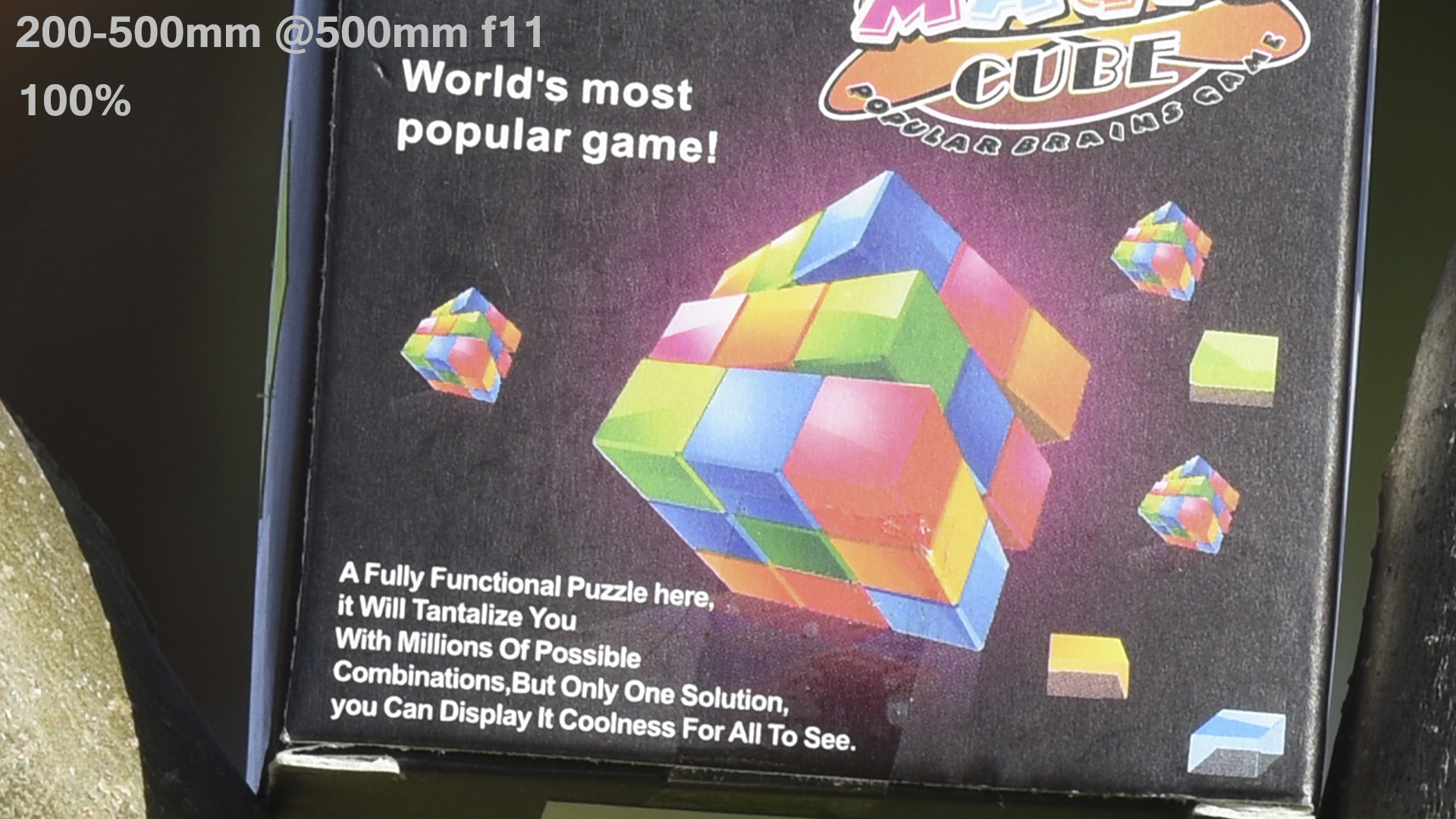 Wide open at 500mm it is not as sharp – as you can see in this image (again – 100% crop)
Wide open at 500mm it is not as sharp – as you can see in this image (again – 100% crop)
 So if you want maximum sharpness you will need to close down to about f/11 (which means that you will need quite a bit of light and the whole point of getting the 1/3’rd or so extra stop over lenses like the 150-600mm Sigma and Tamron is kind of irrelevant.
So if you want maximum sharpness you will need to close down to about f/11 (which means that you will need quite a bit of light and the whole point of getting the 1/3’rd or so extra stop over lenses like the 150-600mm Sigma and Tamron is kind of irrelevant.
Real world sharpness test image- full image (image shot with the D7200 @500mm f/8, ISO 1250, 1/320 sec)
 Versus other comparable lenses
Versus other comparable lenses
Nikon 200-500 vs. Nikon 80-400mm – If you only look at the basic specs than the 200-500 has a longer telephoto range and basically the same aperture, however the 80-400mm Nikon cost almost $1000 more. You might be asking what can justify this extra $ and the answer is a couple of things:
- The 80-400mm has some degree of weather sealing which the 200-500 lacks.
- The build quality of the 80-400mm is better (although both are well built, we have to give it to the 80-400mm which is really a tank).
- Most importantly – the 80-400mm is much sharper wide open than the 200-500mm (although at f/11 they are both very sharp).
So which should you buy? if you are on a budget than the 80-400mm is just not an option for you anyway, if you have the budget and want the best IQ out of a long (400mm~) telephoto-zoom lens at a sub $3000 price – than the 80-400mm is probably your best bet (although the Sigma sports might also be a good choice – if you are willing to carry the almost 3kg of weight…).
Nikon 200-500 vs. Tamron SP 150-600mm F/5-6.3 – this is the probably the million dollar question (or at least the almost $1500 one). I’ll start by saying that if you know what to expect from these lenses (i.e. no working in low light, shooting at optimal apertures, very steady holding and not too crazy demands from the AF), you will probably not be disappointed by any of the two.
I’ll try to make it simple and very basic – the 200-500 has better VR and better AF and about a third of a stop faster aperture. The Tamron is lighter (but both are pretty heavy to be honest) and has longer zoom range. IQ wide open on both of them isn’t on the level of the 80-400mm but it is decent. Closed down to f/11 it is much better and very similar (since we didn’t have the Tamron at the same time we couldn’t do a side by side, but by looking at our Tamron test images the IQ looks very similar.
So which should you buy? if the only thing that you care about is IQ (and maybe the long zoom-telephoto range) and you are on a budget – go with the Tamron – it is lighter, cheaper, has good build quality and will give you the same image quality + 100mm more extra on the telephoto (and a bit more wide angle). If you are going to shoot a bit more hand held (and have strong hands) and want a little bit extra light gathering capability and you don’t mind the little extra $ – go with the Nikon, the IQ is very similar and you will get a much better VR, somewhat better AF and faster aperture.
Nikon 200-500 vs. Sigma 150-600mm f/5-6.3 DG OS HSM Contemporary/Sports – I’ll start by saying that we have yet to test any of these so everything we have to say is based on our experience with the Nikon and how the Sigma lenses performed on test done by others (so please take this with a grain of salt).
Although on paper (and looking at the price difference between the two) the Sigma sports version should be (significantly?) better than the Contemporary, at least some reviewers (see for example our colleague Bryan Carnatha from the-digital-picture) didn’t find this to hold true and they are both very close in performance (although the Sports might have the slight edge on 600mm and of course a much better build quality).
When you try and compare the 200-500mm to the two Sigma lenses (we have done that mostly by extrapolating from the comparisons between the Tamron and the Sigma lenses) it seems that al least when it comes to the Contemporary more or less the same pros and cons apply from the Tamron. IQ should be very close, VR on the Nikon should be better (although the Sigma OS is better than the Tamron), weight is on the Sigma side as well as the longer reach. On the Nikon side you also have the aperture and maybe a bit better AF.
Compared to the Sports version – IQ is again pretty similar but the sports is better build and has weather sealing like the 80-400mm. On the negative side – it is very heavy and more expensive.
So which should you buy? it is actually hard to say. The Contemporary seems to currently be the least expensive option of the group – so if you are on a budget you should go with it and get pretty solid results (keeping in mind everything we noted before). Like with the Tamron – if you want to be able to shoot in (a little bit) less lit conditions – the Nikon has the edge. As for the Sigma Sports – with the price and the weight of this lens – we find it very hard to recommend unless you use mostly tripod/monopod and need weather sealing.
Conclusion
We had a pretty good expirience with the 200-500mm Nikon. In a bizarre way we ended up shooting with it hand held more than with any other of the long telephoto lenses, despite being heavier (and yes you will need strong hands if you are planing on not using a tripod/monopod). To our even bigger suprise we got better sharpness handheld than with a tripod (and yes we switched off the VR), we are not sure why but it really does say a lot about the VR of this lens.
Generally speaking the image quality – maybe the most important aspect of a lens is good – especially closed down (to about f/11). The problem with that is that it really negates the advantage this lens has over the Tamron and Sigma lenses in terms of aperture (i.e. f/5.6 vs. f/6.3 wide open). Apart from that the build quality is good (although the focus ring could be better), and the focusing speed is decent (and better when the limiter is on).
The huge 95mm front element
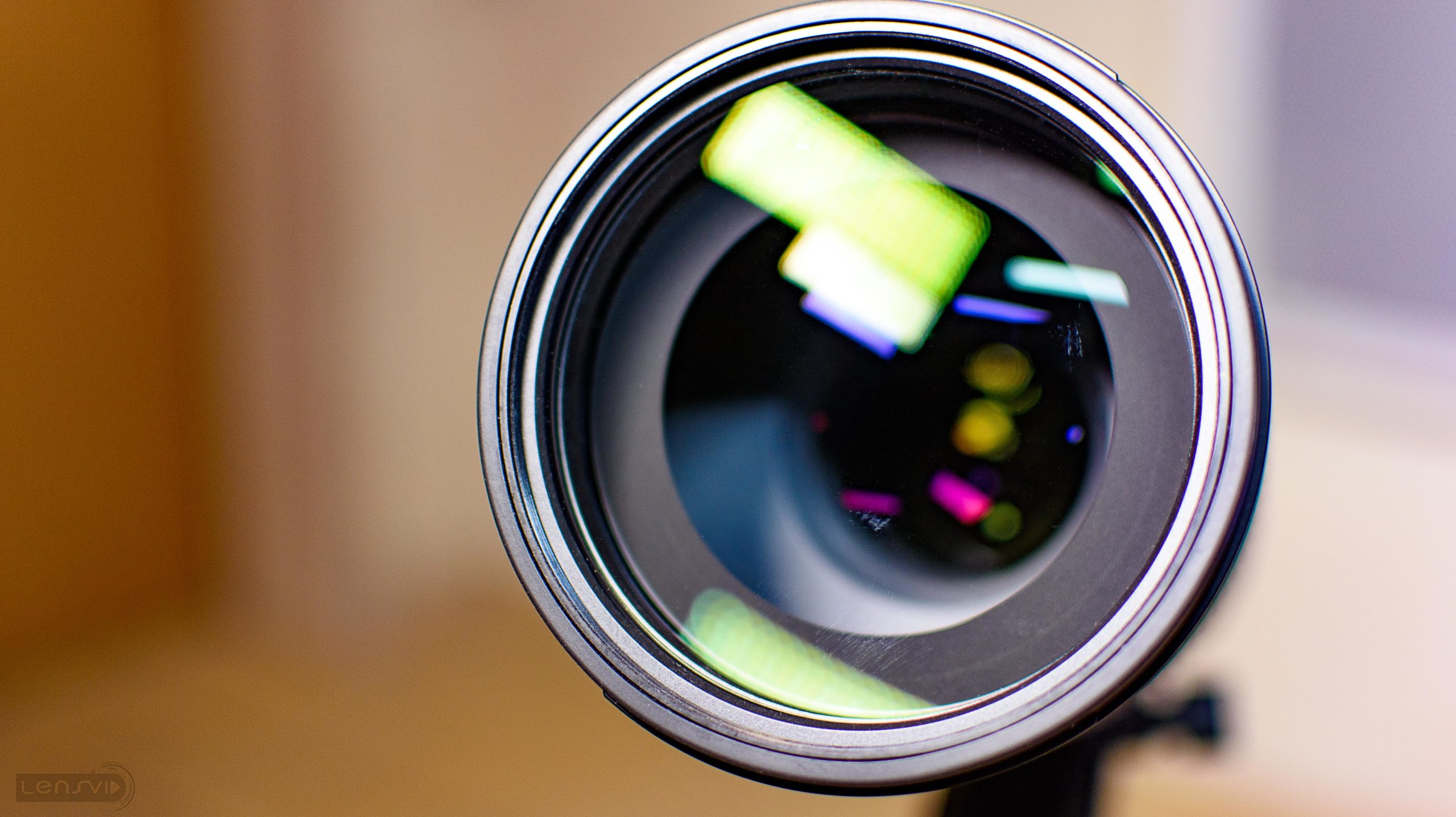 One thing that we want to mention as a side note. We keep testing long telephoto zoom lenses when what we are really looking for is a long telephoto (over 400mm) prime lens. Sadly, at the moment no major manufacturer has released a long telephoto prime at a price of under $2000 (actually not even twice as much). All the long primes are pro lenses – big and heavy with fast (or relatively fast) apertures of f/2.8/f4 (or f/5.6 in the case of the 800mm monsters). If you are looking for a relatively small, light and high quality tele for shooting birds for example, you are mostly out of luck (your best bet is maybe the new Nikon 300mm f/4 with a teleconverter, which isn’t very cheap either).
One thing that we want to mention as a side note. We keep testing long telephoto zoom lenses when what we are really looking for is a long telephoto (over 400mm) prime lens. Sadly, at the moment no major manufacturer has released a long telephoto prime at a price of under $2000 (actually not even twice as much). All the long primes are pro lenses – big and heavy with fast (or relatively fast) apertures of f/2.8/f4 (or f/5.6 in the case of the 800mm monsters). If you are looking for a relatively small, light and high quality tele for shooting birds for example, you are mostly out of luck (your best bet is maybe the new Nikon 300mm f/4 with a teleconverter, which isn’t very cheap either).
To put it simply, what we would really like to see is a 500mm f/5.6 prime lens with good VR, fast AF, light weight (say around or even under 1.5kg – which should be possible using Nikon PF technology) and small (about 1/2 to 2/3 of the 200-500mm length at most), with better performance optically wide open than any of the current zoom lenses that we tested – for under $3K (under $2K would be better but it depends who makes it).
Why don’t we see this lens? the simple answer is that no manufacturer seems to have the motivation. Nikon fears it will effect the sales of its professional prime series or telephoto lenses (it really shouldn’t especially if it will make it a DX lens only – a great fit for the D500 in our view). Sigma seems to focus on very high quality heavy lenses – just check out the rest of the sports/Art series, which leaves us with Tamron which seems to be doing well with the 150-600mm and doesn’t seem to be motivated enough to come up with a new design…
The 200-500mm open to it’s full length
So we are left with what we currently have in the market and with the Nikon 200-500mm which does a very good job all around. Is it the clear winner of the current long zoom-telephoto lenses? no. To be honest I am not sure if there is one which is a clear winner- they all have advantages and disadvantages as we have seen above, and all of the lenses in this group that came out in the past 2 years or so are good choices (if you set your expectations to the correct level). At the end of the day – go with the 200-500mm if you want a little bit faster aperture with good VR and you are O.K. with the extra weight and can’t afford the Nikon 80-400mm (or the 300mm f/4 with a teleconverter) or just really need the full 500mm. Otherwise the Sigma 150-600mm Contemporary or the Tamron are good options and if you want the highest IQ in the category and can spare the money – go with the 80-400mm (if you are O.K. with 200mm less).
What we liked:
- Good image quality (especially stopped down to f/11).
- Decent build quality.
- Very good VR.
- Comes with a good metal collar.
What we didn’t care for:
- Big and heavy (the biggest in its class apart from the Sigma 150-600mm sports).
- Focus ring with reduce tolerance (has less “feel” than the one on the 80-400mm for example).
All the images in this gallery were taken with the Nikon AF-S NIKKOR 200-500mm f/5.6E ED VR and a Nikon D7200. The images have been cropped but not retouched in any way.

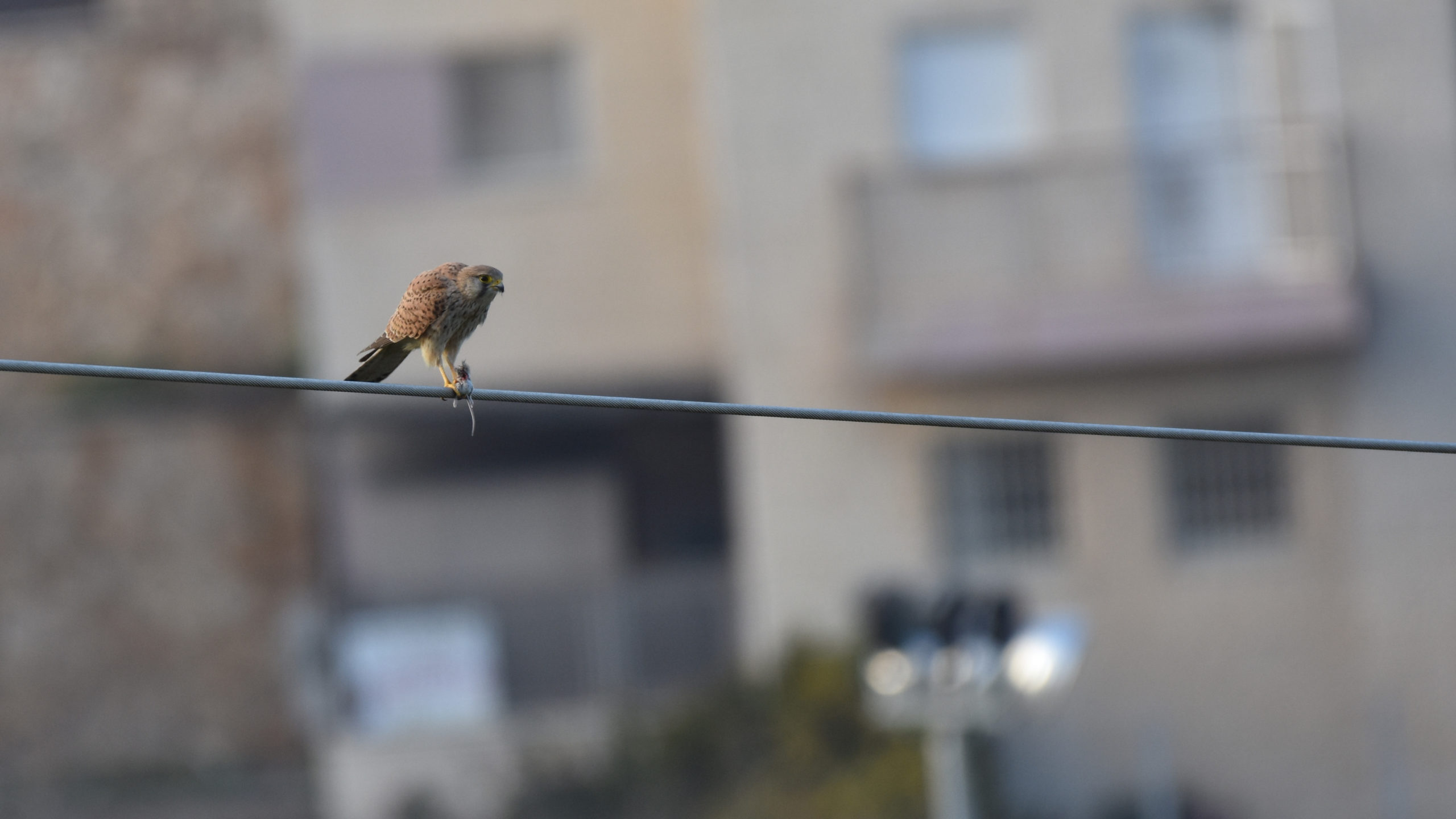
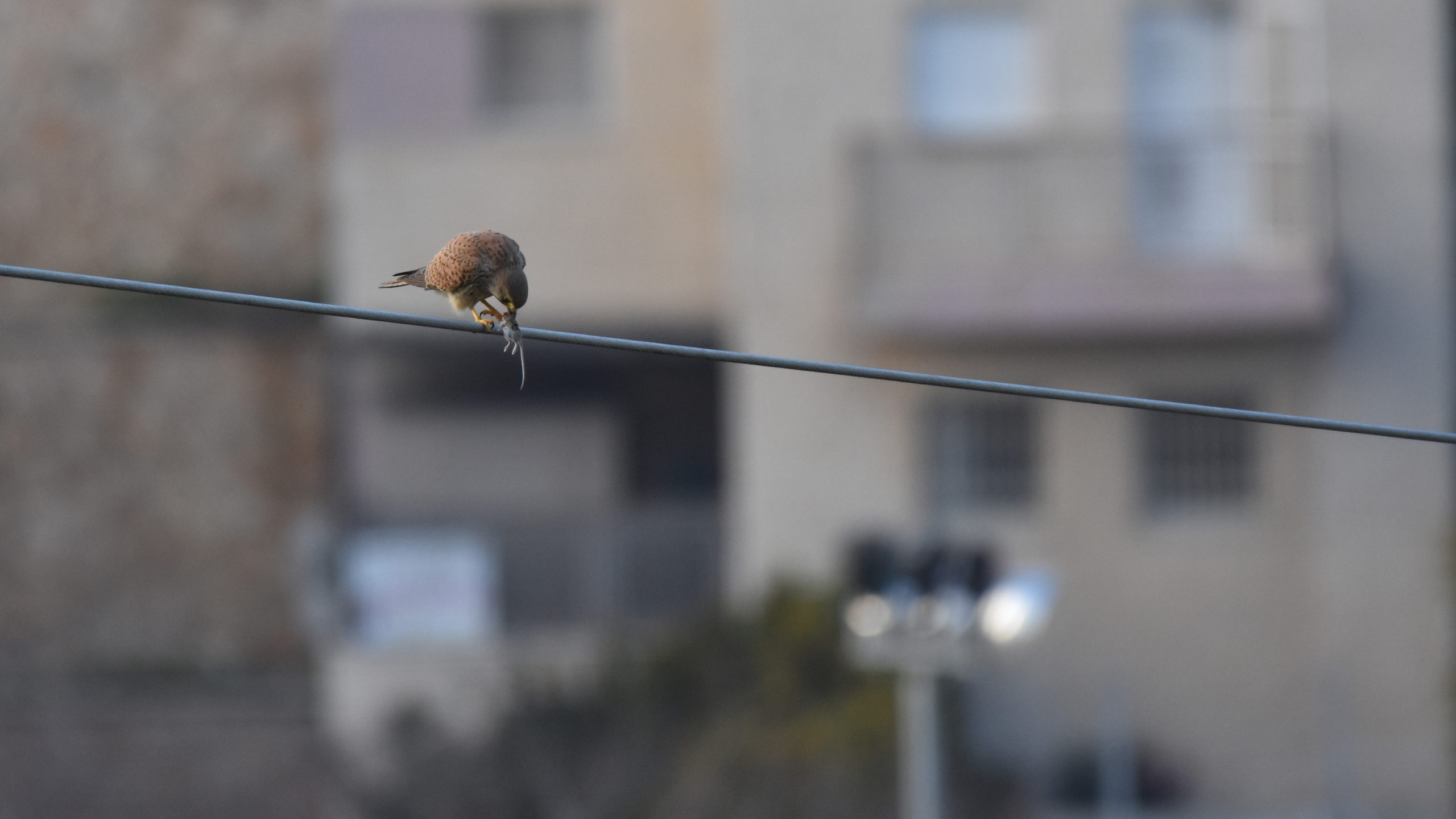 We would like to thank Hadar for loaning us the lens for review. You can check out more LensVid exclusive articles and reviews on the following link.
We would like to thank Hadar for loaning us the lens for review. You can check out more LensVid exclusive articles and reviews on the following link.

You can support LensVid by shopping with our affiliate partners
Affiliates: Amazon, B&H, Adorama and E-bay.
Why should you trust us?